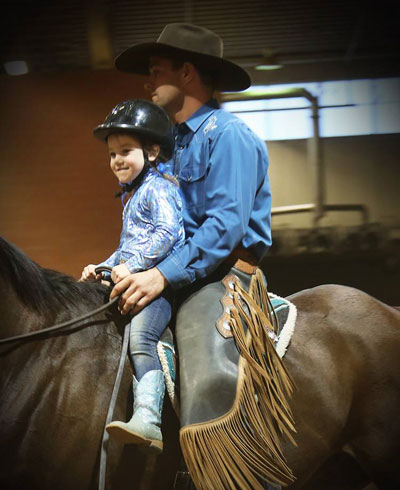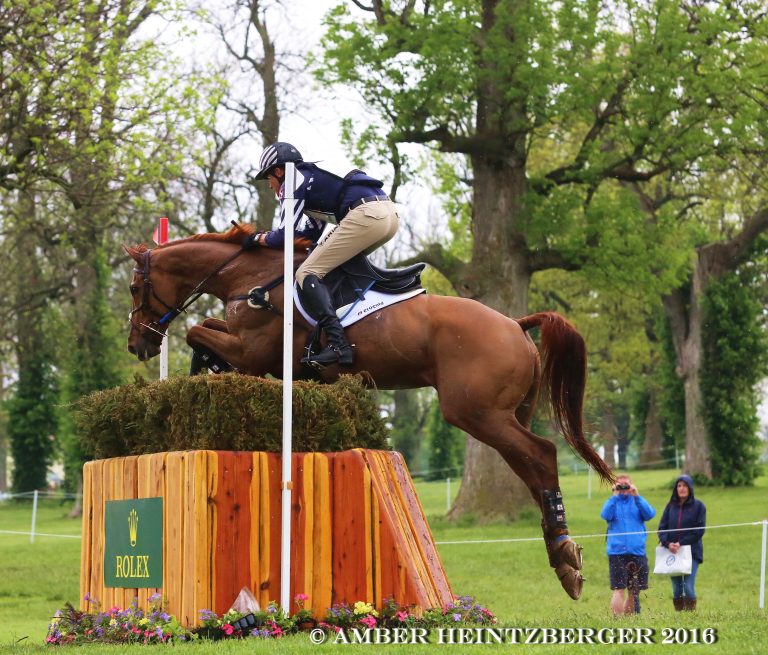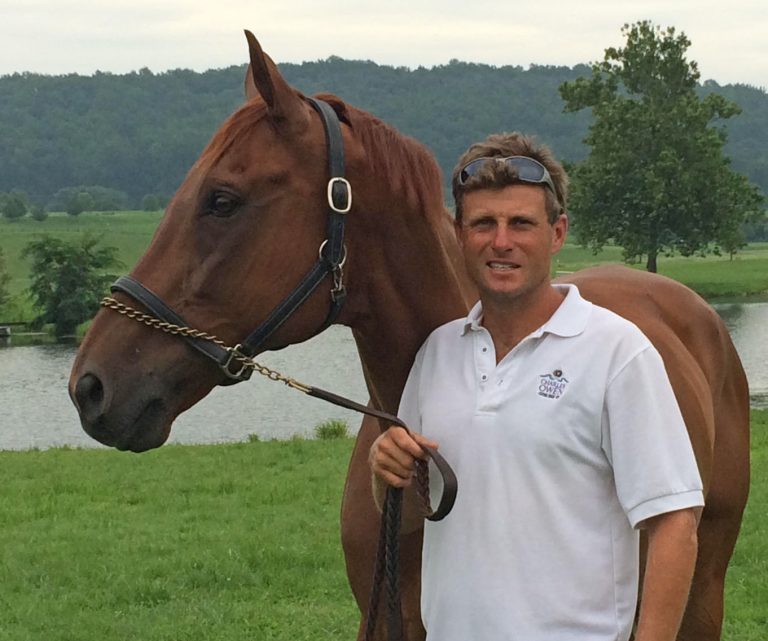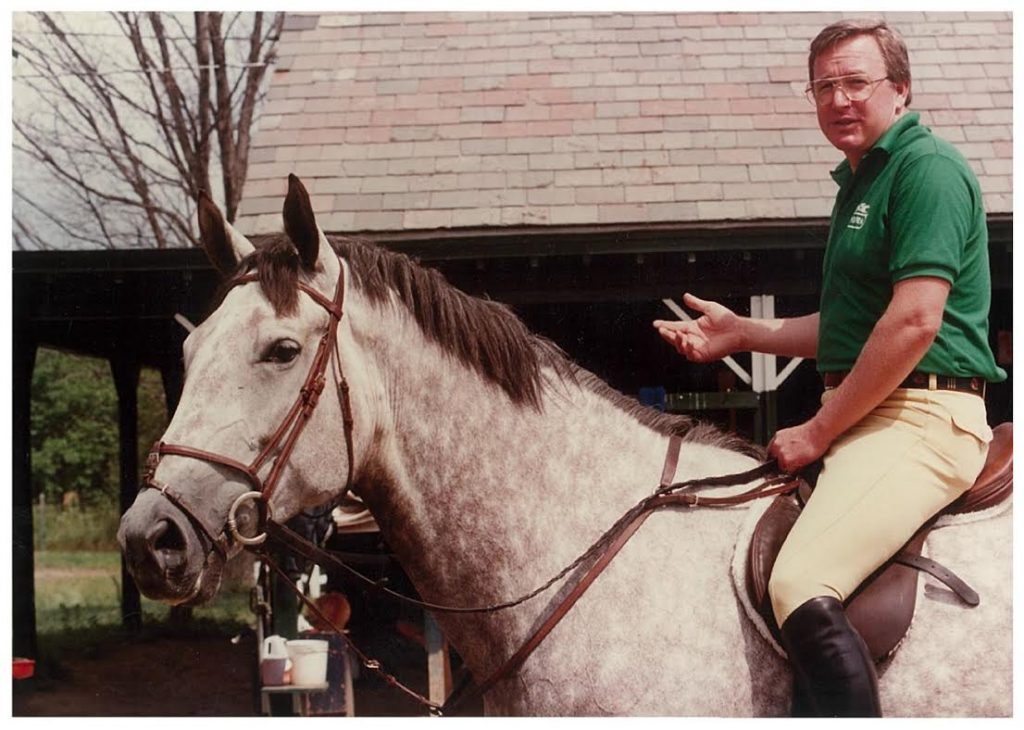
Leonard “Lenny” Hale took over the reins at the Thoroughbred Retirement Foundation last year. The longtime pillar of the racing industry has been fascinated with horses since he was a child. All photos courtesy the TRF, Inc.
A Maryland horseman, longtime racing industry pillar, and chairman of the Thoroughbred Retirement Foundation (TRF) board got his start with horses out behind an old military-style prep school, jumping 10-foot ditches with legendary equestrian Bruce Davidson.
Leonard C. “Lenny” Hale, the CEO, president and chairman of the board of the nation’s oldest and largest Thoroughbred charity was in his late teens, out riding his Thoroughbred when the future Olympian happened by, and watched Hale and his mount clear the gash in the earth behind the McDonogh School in Maryland.
“I’d just galloped down to the ditch and jumped it. This was a tiny little episode in my life. But, that’s when I met Bruce,” recalls Hale, who went on to give Davidson a few pointers. “I remember he rode like a jockey with his knees up under his chin. I got him to drop his arms and gave him about eight or 10 lessons.”
Time passed and Davidson went on to scale the equestrian heights as a member of the U.S. Olympic Team, as Hale embarked on what would become a lifetime career in the race industry; his positions assistant starter, racing secretary and vice-president of racing at major racetracks in New York, Florida, New Jersey, Delaware, Maryland, Virginia and West Virginia.
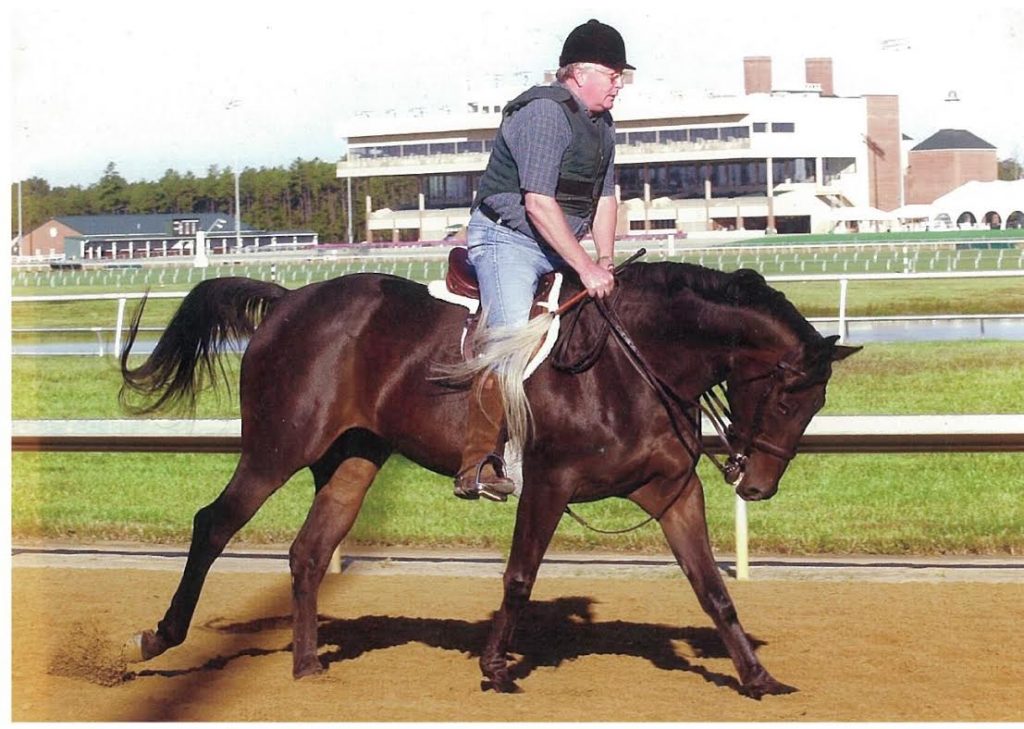
Hale has worked in many capacities in the racing industry for decades.
And last year, Hale replaced John C. Moore as chairman of the TRF board.
In this week’s Clubhouse Q&A, Hale discusses his most memorable moments on the track and his commitment to the care of nearly 900 retired at 23 prison and satellite farms throughout the United States.
Q: You’ve been fascinated with Thoroughbreds since you were a child.
My father had a few Thoroughbred racehorses and I grew up riding local hunts in Maryland as a Whipper- In. That’s how I met Bruce Davidson. He would come out hunting with us during the week, and he had a really nice horse named Bobby More. I was riding a horse who’d fallen during a steeplechase and was donated to the club I rode with. I spent a whole summer with him, and once he got his confidence back, he was terrific and was taken back by his previous owner and ran in some timber races.
I was fascinated with riding and jumping and fox hunting at the time. I wanted to show and hunt, and that led me to the racetrack, where I galloped horses.
Q: From humble beginnings, you held a series of interesting jobs on the track.
My first job was assistant starter at Delaware Park. One of the biggest lessons I learned was working on the starting gate without getting hurt. I fractured a hand once, and I was usually assigned to the nervous horses, who needed a calming presence.
It was quite an interesting career.
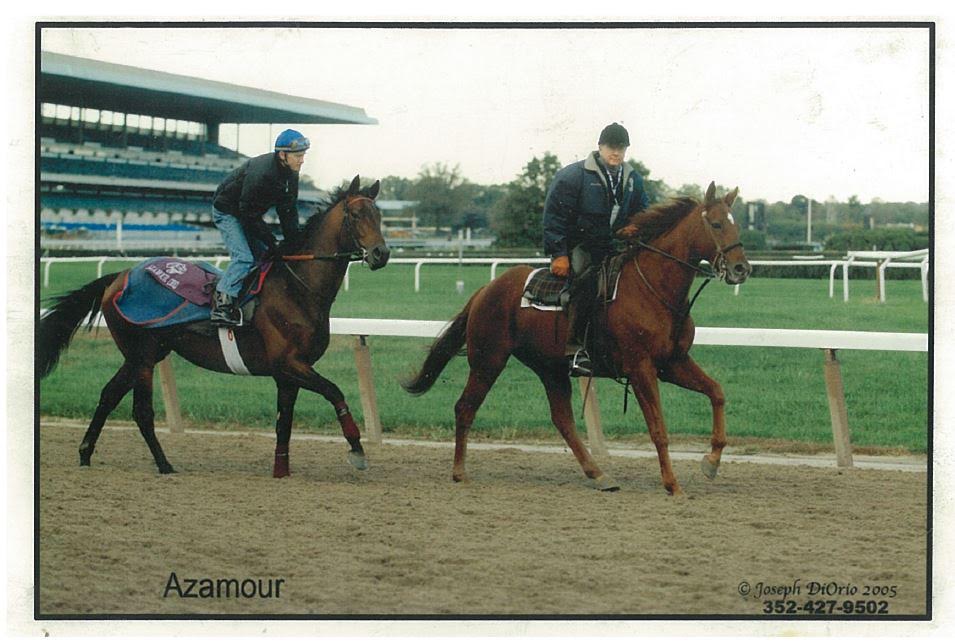
In his first year chairing the Thoroughbred Retirement Foundation Hale has traveled cross country to meet the 900 horses in the herd.
I went on to work for Calder Race track, starting as a paddock and patrol judge. When the horses came out to be saddled, I oversaw that process, making sure all the horse’s gear was correct and that the valets had time to saddle so the horses and riders could get out to the post parade on time.
This was back before there was videotape, so once the horses left the saddling area I took a position inside the track and watched to make sure there were no infractions or incidents. It was my job to make sure there was no bumping, and I was there in case of an emergency. One of the most famous things I witnessed was at the Belmont when Black Hills fell and the rider fell headfirst into the slop. A patrol judge pulled his head out, and if he hadn’t been there he could have drown. In those days, if the horses were injured, the patrol judge would be one of the first people on the scene and expected to report accurately to the stewards what happened.
Q: What was your most memorable moment in racing?

Hale sees a positive future for the TRF.
There were so many! I was on the Breeders’ Cup panel for 25 years. I think Zenyatta’s win in the Breeder’s Cup was on of my favorites. But it’s hard to single them out. It’s been quite a ride, and I’ve met some incredible people along the way. I got to travel quite a bit and was the American invited to participate with the International Ratings Committee in Europe. They ranked the horses on a race-by-race basis at the end of the year.
Q: Who were your favorite American racehorses?
My favorites were Secretariat and Forego, who was a big, massive horse who carried lots of weight. He was fourth in Secretariat’s Kentucky Derby. I’ve seen a lot of really great horses since then, but they were my favorites.
Q: You’re good friends with Penny Chenery, who was a founding director of the TRF (as well as Secretariat’s owner). What did she think about your decision to step in as chair?
We became very close friends in ’73, right after she won the Triple Crown. We were on a committee of the Thoroughbred Breeders and Owners Association. She was one of the founding board members of the TRF. And we were also on the Travers Committee for years. When I told her I decided to become chair, she said, “Well good. It’ll be well worth while.”
Q: What was it like transitioning from the track to the TRF?
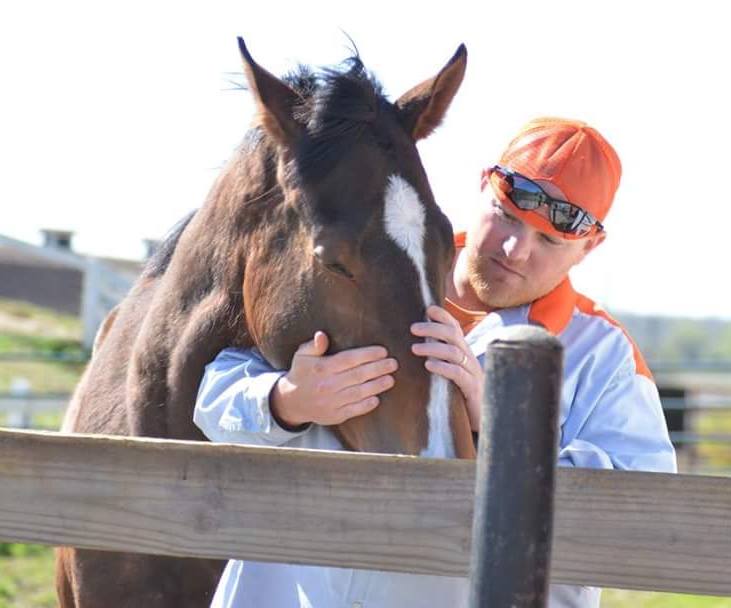
The TRF’s Second Chances program for prison inmates and retired racehorses is in 9 facilities. Hale would like to see the good work being done there expanded.
I’d retired so many of my own horses, fox hunters and show horses, that it wasn’t a stretch for me. And I’m really happy to do it. We have some really great horses out there. The ones who aren’t able to do more should be taken care of, and that’s what we’re doing.
Q: Since becoming chair, you’ve logged many miles checking on the horses.
I learned long ago that if I sat in my office and asked 17 different owners and trainers what the track conditions were like on a particular day that I’d get 17 different opinions. So, I’d ride out every morning on my own horse and decide for myself. That’s my approach with the TRF.
I wanted to see the horses and our facilities first hand. I inherited 900 horses and after a year, I’ve seen almost all of them. Most have been in extremely good shape. I’m planning to go to Oklahoma next, and to get out to as many facilities as I can.
It’s an exciting time for us, and with our prison facilities, it’s turning into a really good situation all around. And, I’m hoping we can make things even better.
Q: Fundraising is your major goal for the future of the TRF.
When I first took over last August, we had 900 horses, and it takes a lot of money to feed that many horses. But, I’m happy to say that things are getting much better. We’ve started a $20 million endowment drive. My goal is to get us back in the black, and I’m optimistic. I’m a glass is half full kind of guy.
